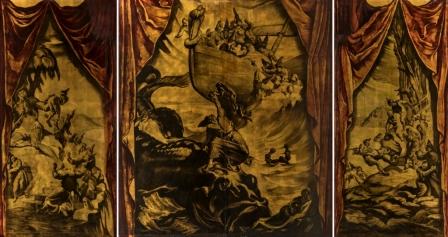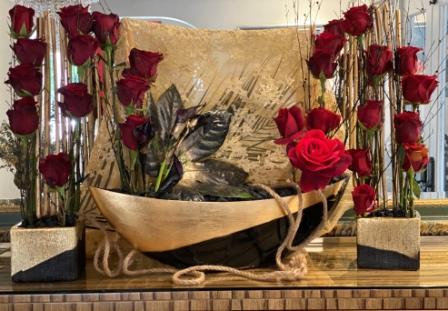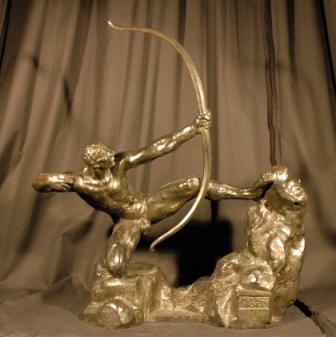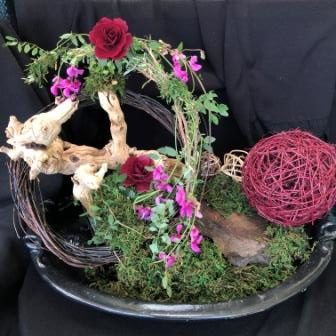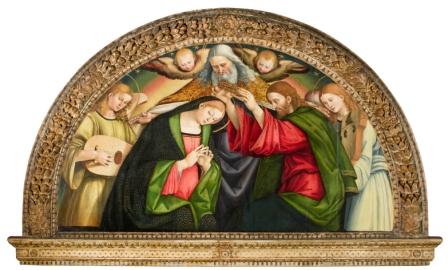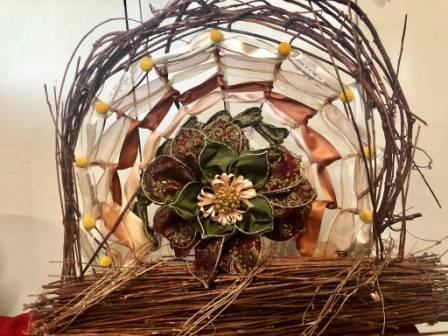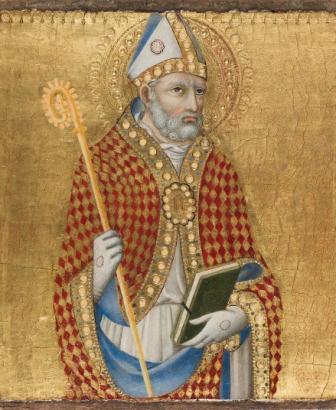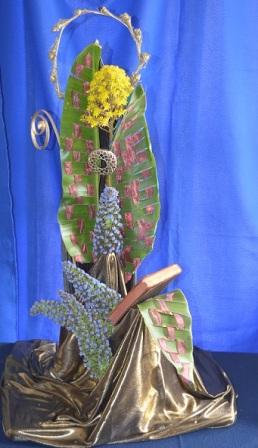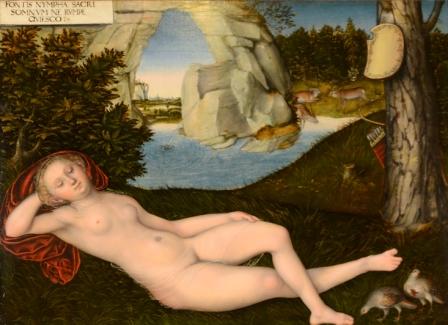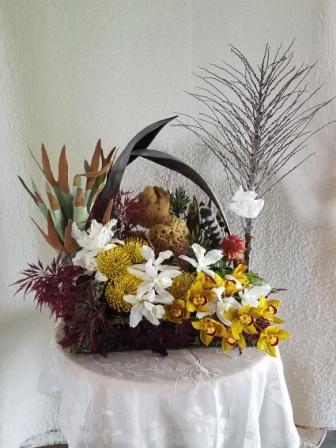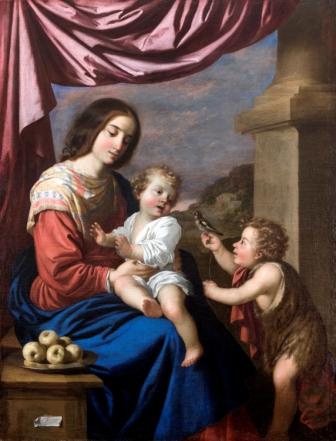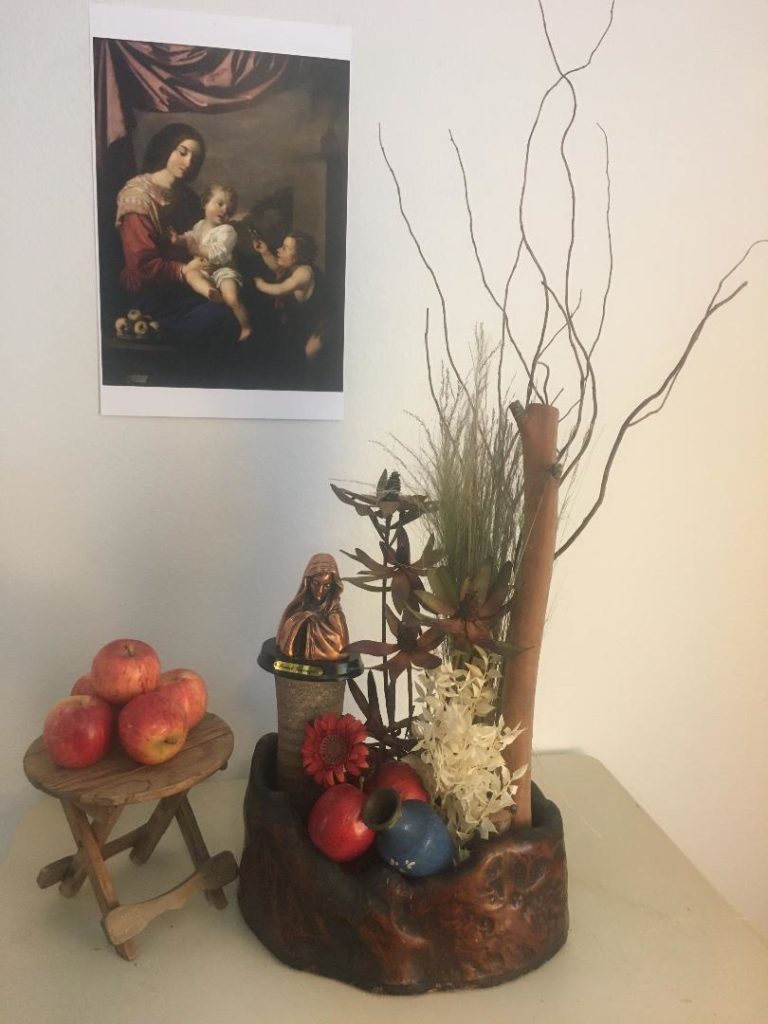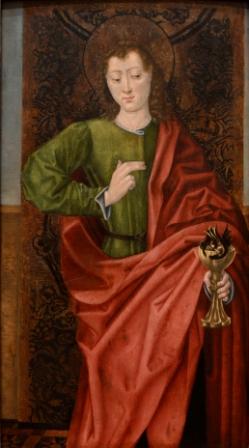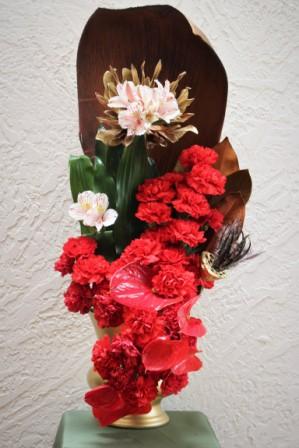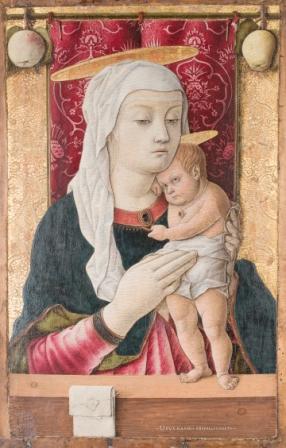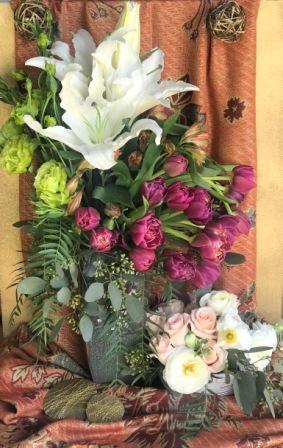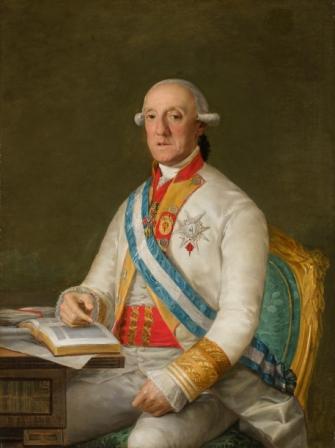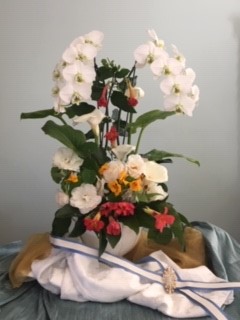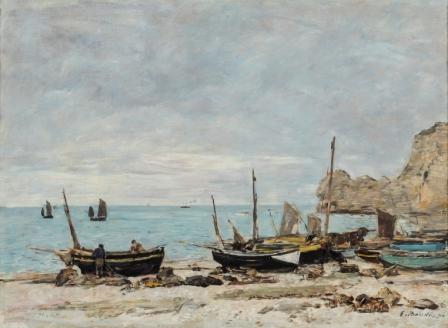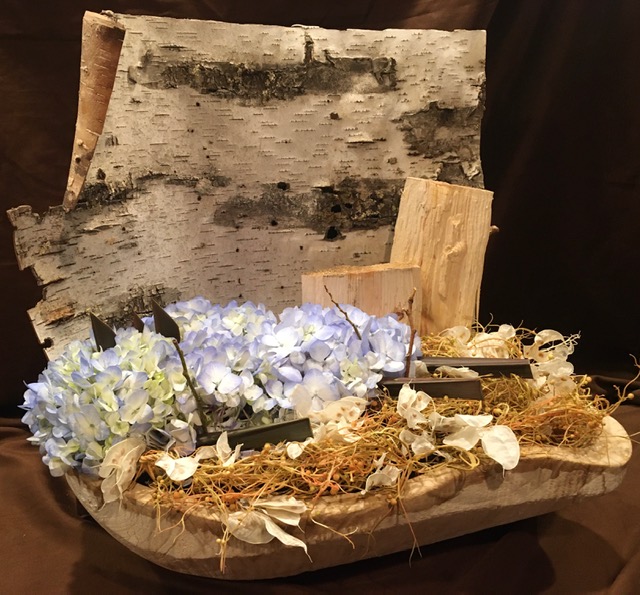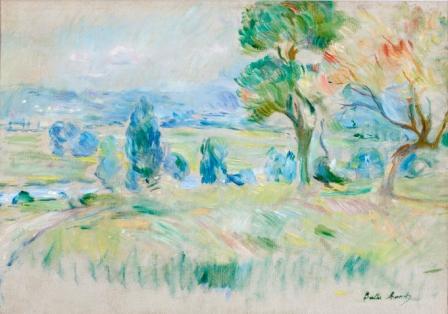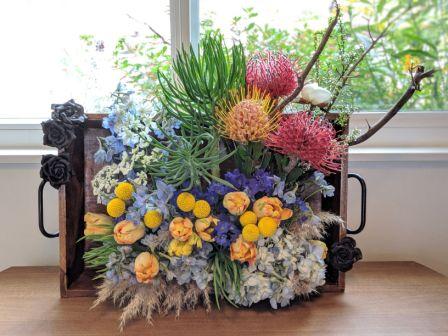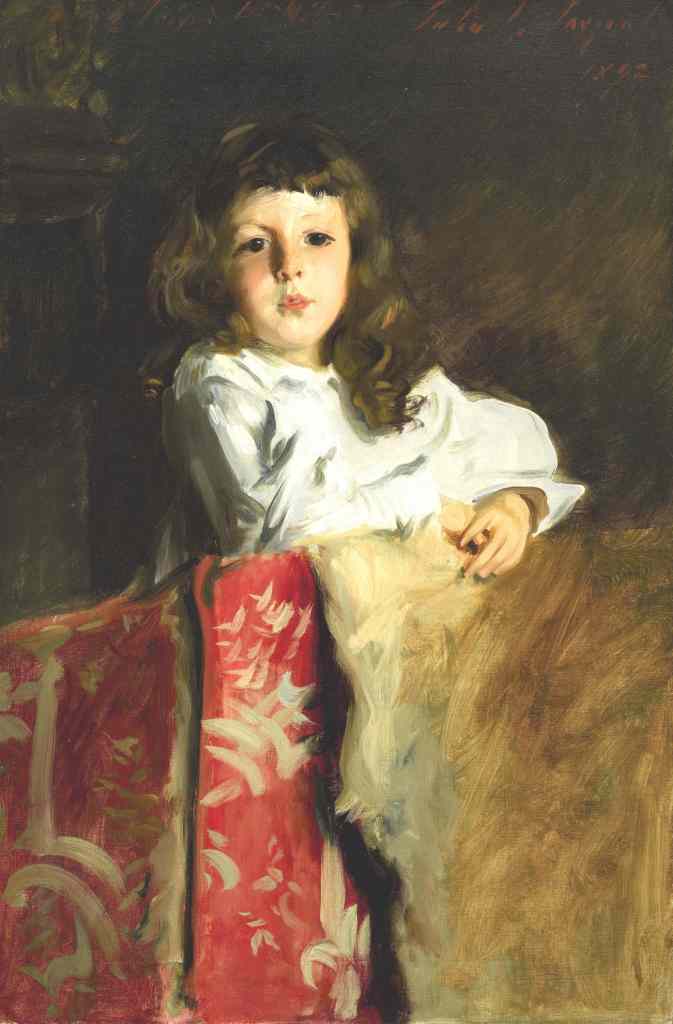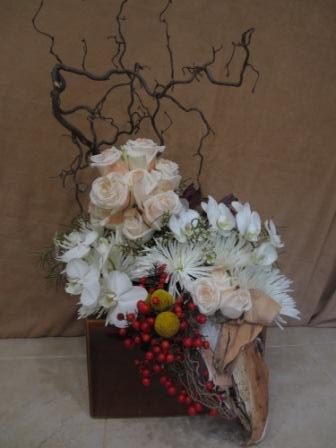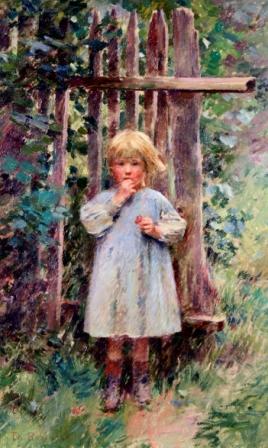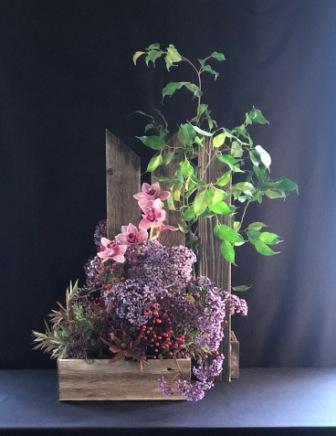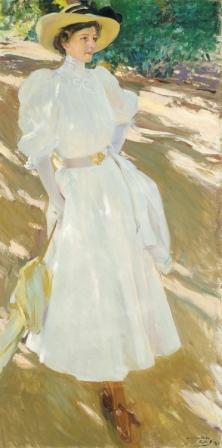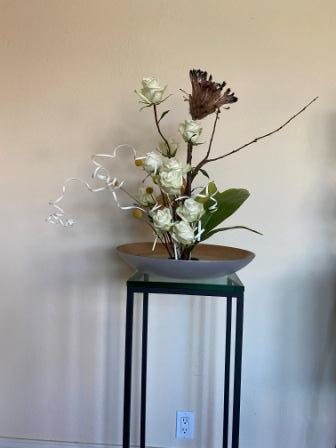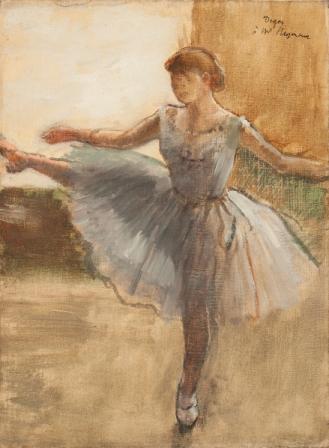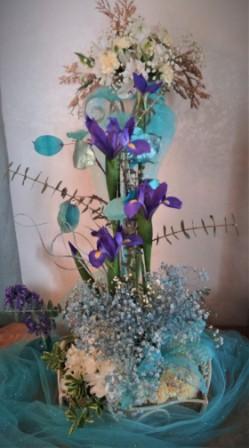Virtual Art Alive 2020 welcomes the below creative “floral” designs from our official designers using flowers and items from home. Thank you to our designers!
Aventures de Simbad de Marin by José María Sert interpreted by Tiffiney Welles
Floral Designer Statement: “As I wondered the gallery this large triptec kept drawing me in. How to capture something so dark with little color and bring it to life. I hope I found its life in this design – The blood color of roses, the glimmer of the gold in the containers with stenciled black like the stormy sea of the painting, using dark flowers to create figures hidden in the painting and the lace as a back drop. It has so many elements like the painting I hope it keeps the viewers attention as the art piece kept mine.”
SDMA Collection: José María Sert. Aventures de Simbad de Marin, 1924. Oil and gold leaf on panel. From Romy Silver-Kohn and Leigh Silver in Honor of Jack and Shirley Silver. 2018.119.1-3.
Rotunda Stairwell West
Heracles the Archer by Emile-Antoine Bourdelle interpreted by Cassie Goland
Floral Designer Statement: “I went with as close to my original sketch as possible and using materials I already had and could find outside! It was a different challenge that I enjoyed!”
SDMA Collection: Emile-Antoine Bourdelle. Heracles the Archer, ca. 1909. Bronze sculpture. Gift of Pliny F. Munger. 1962.227.
2nd Floor Rotunda
The Coronation of the Virgin by Luca Signorelli interpreted by Carmen Villegas
Floral Designer Statement: “The colors of the painting.”
SDMA Collection: Luca Signorelli. The Coronation of the Virgin, 1508. Oil and tempera on panel. Museum purchase through the Gerald and Inez Grant Parker Foundation, Dr. and Mrs. Edwin Binney 3rd and Museum Art Purchases Funds. 1985.59.
Gallery 16
Saint Sabinus (?) by Sano di Pietro interpreted by Diana Drummey
Floral Designer Statement: “My inspiration was to accentuate the golden colors in the art piece and try to bring out the red in a weaving process. I wanted to use what I had around my yard and house as well as trying a new technique by weaving the material in the leaf of the Bird of Paradise. I enjoyed the experience and freedom to up and recycle items around my house…the material, the dried rose halo, material and book…to then weave these items into the art alive piece.”
SDMA Collection: Sano di Pietro. Saint Sabinus (?), ca. 1450-1460. Tempera on panel. Gift of Anne R. and Amy Putnam and commemorating the Silver Jubilee Celebration of Fine Arts Society. 1950.106.
Gallery 16
Nymph of the Spring by Lucas Cranach the Younger interpreted by Joanie Mees and Donna McLee
Floral Designer Statement: “Do Not Disturb My Sleep. In this time of COVID-19 do not disturb my sleep takes on a current meaning. As we shelter in place all of the material comes from our gardens. The first blooms of Spring giving way to hope and soon to return to the arts. Wake us gently but excitedly to next year.”
SDMA Collection: Lucas Cranach the Younger. Nymph of the Spring, ca. 1540. Oil on panel. Purchased with funds provided by Toni Bloomberg; Gene and Taffin Ray; an anonymous donor and the Museum’s Acquisition Fund. 2018.1.
Gallery 16
Virgin and Child with Saint John by Francisco de Zurbarán interpreted by Sue Elsayeh
Floral Designer Statement: “I was inspired by the different dark colors and shapes on the painting. What was interesting I was able to use any material
instead of just flowers that was a big change in creating my artwork.”
SDMA Collection: Francisco de Zurbarán. Virgin and Child with Saint John, 1658. Oil on canvas. Gift of Anne R., Amy and Irene Putnam. 1935.22.
Gallery 16
Saint John the Evangelist and the Poisoned Cup by Master of Saint Nicholas interpreted by Suzanne Borel
Floral Designer Statement: “The story behind the painting inspired me to create this interpretation. The theme of this religious painting is the testing of Saint John’s faith. He was given a cup of poisoned wine, before drinking it, he blessed the wine and the poison transformed into a snake thus saving his life. It was very fulfilling to be able to bring together different types of fresh and dried flowers, plants, succulents, husks and pods to interpret a painting that I personally admire the story behind it.”
SDMA Collection: Master of Saint Nicholas. Saint John the Evangelist and the Poisoned Cup, ca. 1475. Oil on panel. Gift of Mr. Bertram Newhouse. 1936.47.
Gallery 16
Madonna and Child by Carlo Crivelli interpreted by Sylvia Norberg
Floral Designer Statement: “I loved creating 2 individual arrangements that represented the Blessed Mother and Child in a beautiful way. Including similar colors and a feeling of unity.”
SDMA Collection: Carlo Crivelli. Madonna and Child, ca. 1468. Tempera and oil on panel. Gift of Anne R. and Amy Putnam. 1947.3.
Gallery 16
Vicente Maria de Vera de Aragon, Duque de la Roca by Francisco José de Goya y Lucientes interpreted by Kathryn Schneider
Floral Designer Statement: “I concentrated on depicting the feeling in the painting with flowers in an arrangement that interpret the shape and colors, I chose a traditional white pedestal bowl that seemed to suit the era of the time of this portrait. I draped some gold and white brocade around the bowl and a ribbon sash and pin, that also captures the jacket,sash and pin he is wearing. It was a fun challenge to not have the normal access to flowers, and to use what could be found in my surroundings. I also felt the portrait was challenging but I was pleased with what nature provided to help me depict the painting.”
SDMA Collection: Francisco José de Goya y Lucientes (aka Goya). Vicente Maria de Vera de Aragon, Duque de la Roca, ca. 1795. Oil on canvas. Gift of Anne R. and Amy Putnam. 1938.244.
Gallery 16
Étretat by Eugène Louis Boudin interpreted by Cindy Garzon
Floral Designer Statement: “My work of art is Étretat by Eugene Louis Boudin. The art piece’s main subject matter is the boats in the foreground, not the sea in the background. Your eye is drawn to the sharp lines of the boats situated on the sandy, rocky beach; depicting the hard, rough life of the fisherman. The hardness of the boats is in complete contrast to the calmness of the sea and the neutral colors the artist chose.
To interpret the above, I chose an irregular wooden bowl to go with the theme of the beach. To get the texture of the beach feeling, I used the vine berry garland and the bleached dried lumaria for the rocks in the sand. For the ocean, I chose the blue hydrangeas. For the ships I used the twigs of mimosa for the masts and cut red flax leaves for the hulls of the boats. I had a great time doing this! Thanks for the opportunity to still participate in Art Alive 2020!”
SDMA Collection: Eugène Louis Boudin. Étretat, 1890. Oil on canvas. Gift of John F. Kraushaar. 1926.217.
Gallery 18
The Seine Valley at Mézy by Berthe Morisot interpreted by Erin Kluzak
Floral Designer Statement: “I could not imagine not doing Art Alive– I love it! This year I still wanted to stay as close to what I would have created in person, and I also wanted to take this opportunity to support the local growers in San Diego who have been hit hard as well during this time. Hope this and others bring you happiness!”
SDMA Collection: Berthe Morisot (AKA Berthe-Marie-Pauline Morisot; Mrs. Eugène Manet). The Seine Valley at Mézy, 1891. Oil on canvas. Gift of Mr. and Mrs. Norton S. Walbridge. 1964.117.
Gallery 18
John Alfred Parsons Millet by John Singer Sargent interpreted by Jeanne Irwin
Floral Designer Statement: “The beautiful painting! All live flowers, some obtained from a grocery run and some of home and neighbors yard. We are all in this together, right?”
SDMA Collection: John Singer Sargent. John Alfred Parsons Millet, 1892. Oil on canvas. Museum purchase with funds from The Jack Thomas Family Charitable Fund in memory of Patricia B. Thomas; Toni Bloomberg; Gene and Taffin Ray; Sheryl and Harvey White; and Mrs. John Burnham, by exchange. 2017.261.
Gallery 18
A Marauder by Theodore Robinson interpreted by Judi Bowes
Floral Designer Statement: “The title of this painting, A Marauder, sets the scene for a child stealing berries. (Notice the red object in his left hand.) I emphasized this narrative by using several nandina berries in my arrangement. I was drawn to the artist’s use of texture, color and light. This became the emphasis of my arrangement. While working with materials from my yard I became fascinated by the variety of each plant material as it occurs in different stages of growth. This was particularly true for the limonium.”
SDMA Collection: Theodore Robinson. A Marauder, 1891. Oil on canvas. Gift of the Payne Family Trust, February 6, 1985. 2011.27.
Gallery 18
María at La Granja by Joaquín Sorolla y Bastida interpreted by Keiko Schneider
Floral Designer Statement: “I love Sorolla’s paintings and the colors he chooses. I felt inspired and motivated by Sorolla’s choice of colors and tried to see it in the flowers I used.”
SDMA Collection: Joaquín Sorolla y Bastida. María at La Granja, 1907. Oil on canvas. Gift of Mr. Archer M. Huntington in memory of his mother, Arabella D. Huntington. 1925.1.
Gallery 18
The Ballerina by Edgar Degas interpreted by Patricia Clevenger
Floral Design Statement: “The inspiration is the colors that appear in the work of art, The Ballerina by Edgar Degas. The softness of the tulle skirt was created by the use of baby’s breath. The iris form the body and add more color. The process was more difficult than I had planned. Figured it would be easy; pick up flowers , add non – floral items and then ~ completed piece! Wasn’t quite that simple! This is actually the 2nd arrangement I created…..the first one just didn’t ‘feel’ right. It was too heavy and lacked the colors I felt the arrangement needed. I re-designed the piece and found the correct balance of color and style.”
SDMA Collection: Edgar Degas (AKA Hilaire Germain Edgar De Gas). The Ballerina, ca. 1876. Oil on canvas. Museum purchase through the Earle W. Grant Acquisition Fund. 1976.111.
Gallery 18


